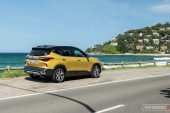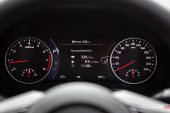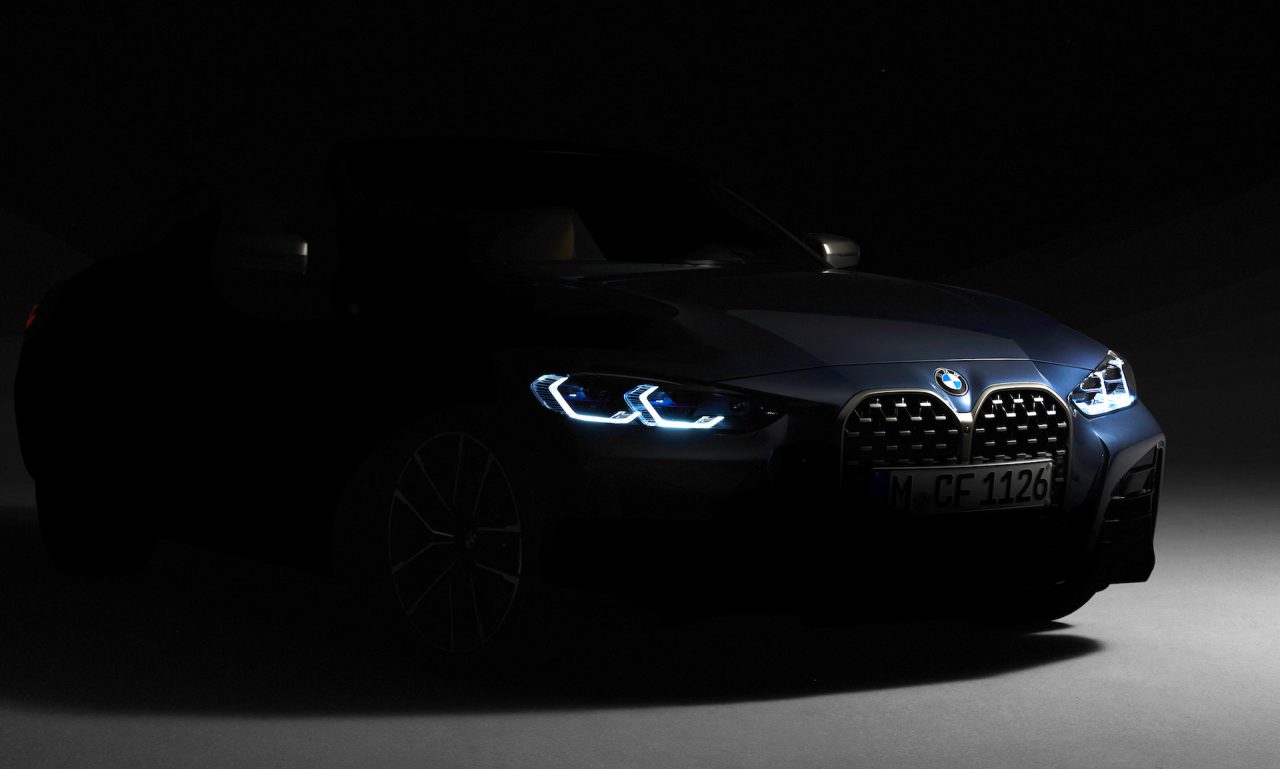The small SUV market is now a hugely contested segment in Australia. That’s why Kia has thrown its all at it and introduced a brand-new model; the Seltos. It comes with a fresh, youthful design that is jam-packed with practicality and the latest mod-cons.
The unique name comes from ‘Celtos’, the son of Hercules in Greek folklore. It slots itself under the popular Sportage mid-size SUV in size and price, and shares the same underpinnings as its sister company’s Hyundai Creta (not sold in Australia) and, to some degree, the Hyundai Kona.
Buyers can choose from four variants in Australia; the entry level S, the midrange Sport, Sport+, and the range-topping GT-Line. The first three variants are available in front-wheel drive, and the top variant comes with all-wheel drive only. The Sport+ is available in both.
Sadly, no manual gearboxes are to be seen in any. Instead, there is a CVT auto for the 2.0L 2WD models, and a seven-speed dual-clutch auto for the the 1.6 turbo all-wheel drive models.
Here we’re taking the entry-level S and the top of the line GT-Line for a spin to check out both extremes – both featured in Starbright Yellow, coincidentally. Prices start at $26,690 for the S, and peak at $42,690 for the GT-Line (plus on-road costs).
2020 Kia Seltos S – THE SPECS
[column width=”47%” padding=”6%”]Engine: 2.0-litre four-cylinder
Output: 110kW@6200rpm / 180Nm@4500rpm
Transmission: CVT auto
Drive type: Front-wheel drive
Wheels: F & R: 16×6.5 steel, 205/60
ANCAP: Five stars
Tare weight: 1355kg
Power-to-weight: 12.32:1 (kg:kW)
Official fuel economy: 6.8L/100km
Economy during test: 7.3L/100km
Fuel capacity/Type: 50L/91 RON[/column] [column width=”47%” padding=”0″]Power efficiency: 16.18kW:L/100km
0-60km/h: 4.30 seconds*
0-100km/h: 8.86 seconds*
60-110km/h: 6.12 seconds*
1/4 mile: 16.69 seconds at 138.6km/h*
Max acceleration: 0.569g
100-0km/h braking: 3.01 seconds at 38.13 metres*
Max deceleration: -1.319g
Decibel at idle: 40*
Peak decibel at 60-100km/h: 86*
Priced from: $26,690[/column][end_columns]
2020 Kia Seltos GT-Line – THE SPECS
[column width=”47%” padding=”6%”]Engine: 1.6-litre turbo-petrol four-cylinder
Output: 130kW@6000rpm / 265Nm@1500-4500rpm
Transmission: Seven-speed dual-clutch auto
Drive type: All-wheel drive
Wheels: F & R: 18×7.5, 235/45
ANCAP: Five stars
Tare weight: 1470kg
Power-to-weight: 11.30:1 (kg:kW)
Official fuel economy: 7.6L/100km
Economy during test: 7.6L/100km
Fuel capacity/Type: 50L/91 RON[/column] [column width=”47%” padding=”0″]Power efficiency: 17.10kW:L/100km
0-60km/h: 3.87 seconds**
0-100km/h: 7.74 seconds**
60-110km/h: 5.22 seconds**
1/4 mile: 16.16 seconds at 144.1km/h**
Max acceleration: 0.618g**
100-0km/h braking: 2.91 seconds at 37.57 metres**
Max deceleration: -1.169g**
Decibel at idle: 40**
Peak decibel at 60-100km/h: 79**
Priced from: $42,690[/column][end_columns]
* Figures as tested by PerformanceDrive on the day. Factory claims may be different. **Results based on previously-tested Sport+ variant with AWD 1.6T
2020 Kia Seltos S and GT-Line – THE PACKAGE
One of the biggest standouts with the new Seltos has to be its design. We love it. It’s fresh, youthful but not too silly, and distinct. The front end is given a rounded nose with dual-tiered lights and a split grille that makes it appear bigger than it is. The GT-Line has been beautifully crafted with multi-tier LED lights that look brilliant at night time. Kia lets you choose a contrasting cherry black roof as well, which we think brings it up to presentation standards of European brands.
The rear is more on the conservative side of design compared to other small SUVs, which is great. No silly looking protruding lights like the Mitsubishi Eclipse Cross, or the squashed shape of the Hyundai Kona. We like the metallic bar that bridges the taillights and surrounds the reversing lights. The GT-Line picks up some extra chrome areas.
Turning to the inside and it is unexpectedly spacious for the small SUV market. It has a particularly airy and non-protruding layout. The dash is set back and the centre console sits low so you don’t hit your knees or elbows on anything. A high ceiling also helps to maximise headroom. And with a ground clearance of 177mm in both models, it is strain-free hopping in and out. Whether you’re in the front or rear row there’s a wealth of legroom for four adults to enjoy long-distance travelling. Only the S model lacks seat shape, support and extra adjustments over the GT-Line.
Kia now knows how to make a layout simple yet contemporary. The dash and touch-screen are much more straightforward to use than some Euro brands like Peugeot and Audi. And still, buttons and dials feel surprisingly premium in quality. There are some hard plastics around, especially in the S, but they don’t look as cheap as they feel. There is an abundance of crannies and cupholders to organise your belongings, including a large two-level space in front of the gearstick, and a generously-sized centre console and door pockets.
If boot space is of importance to your lifestyle, you’ll be happy to know that Kia has looked after that too. At 433 litres, it is one of the biggest in this class. In comparison, the Mazda CX-30’s boot is 317L, Mitsubishi ASX’s is 393L, and the Toyota C-HR’s is 377L.
All Seltos models score (at minimum) forward collision warning with pedestrian avoidance, active lane-keeping assist and departure warning, driver attention detection, tyre pressure sensors, a basic six-speaker stereo with Bluetooth, an 8.0-inch touchscreen, and Android Auto and Apple CarPlay. The S misses out on some desirable features like alloy wheels, adaptive cruise control, rain-sensing wipers, proximity sensor remote locking, and a full-sized alloy wheel.
Although creeping up to pricey heights, the GT-Line gains many must-have features. 18-inch alloys and that full-sized spare alloy, rear air vents, climate-control, funky customisable ambient interior lighting, blind-spot sensors, safe exit alert, adaptive cruise control, a bigger 10.25-inch centre touch-screen that’s paired with a premium eight-speaker Bose sound system, sat-nav, a 7.0-inch partially digital instrument cluster, head-up display, faux leather heated and cooled front seats, and power adjustable front seats are standard. A handy wireless phone charger, and a vastly superior drivetrain are also thrown in. Which brings us to just that, actually.
2020 Kia Seltos S and GT-Line – THE DRIVE
You can probably guess which engine we like the best. But the important question is, is the higher cost worth it? Well, our short answer is yes. The base 2.0-litre four-cylinder petrol engine is naturally aspirated, so there’s no turbo to force it along like the GT-line’s 1.6-litre engine. This makes a world of difference in liveliness and fun, but also general effortlessness. By all means the base engine does the job adequately, but it won’t give you any thrills, and going up hills it becomes a thrashy affair, partly due to the CVT auto. The 1.6 turbo pulls more easily, even from low revs. All of its 265Nm is available from just 1500rpm, but in the 2.0L unit you only get 180Nm and at 4500rpm.
With the turbo engine you also gain a more sophisticated – and more enjoyable – seven-speed dual-clutch automatic over the shrill CVT auto. All this translates to a 20kW gain in power, 85Nm gain in torque, and about a one second improvement in the 0-100km/h sprint. According to our Vbox Sport the S takes 8.86 seconds and the 1.6T AWD (tested in the Sport+ previously, video below) zips to 100km/h in 7.74 seconds.
In terms of driving dynamics, all Seltos models have the same sturdy and nimble feel on the road. You can tackle corners and you’re left with minor body roll, and you can expect a suitable amount of feedback and steering weight. Those 16-inch steel wheels on the S are a bit of a joke these days, wrapped in taller and narrower 205/60 tyres. A more confident grip and enhanced response is noticeable from the GT-Line’s 18-inch wheels and 235/45 tyres. In saying that, the tyres on the S will be more forgiving when hitting rough and unsealed roads.
Local engineering and testing in the Seltos means the ride is fine-tuned to suit local conditions. It glides over bumps rather peacefully. Being higher off the ground than a regular car translates to slightly longer suspension travel, and that allows speed humps to be tackled confidently and comfortably. Dirt roads feel much less precarious in the all-wheel drive models. But that’s about as far as you would go in terms of off-roading.
Although our testing will be harsher than official industry tests (and probably harsher than long-term ownership results), we achieved a fuel consumption average of 7.3L/100km in the base S. Its official rating of 6.8L/100km is a touch above average for a small two-wheel drive petrol with similar engine outputs. With no turbo, you tend to be inclined to put your foot down more, which obviously doesn’t help in this area.
As for the GT-Line, it only burned 0.3L more than the 2.0-litre engine during our test. At 7.6L/100km, it is commendable considering the added performance. Officially, it actually averages the same figure we achieved. Both engines are compatible with the cheapest fuel on the market; E10 and/or 91 RON.
2020 Kia Seltos S and GT-Line – THE VIDEOS
2020 Kia Seltos S and GT-Line – THE VERDICT
We have fallen in love with Kia’s new Seltos, particularly the GT-Line. It is a brilliant little SUV that is full of spark, practicality and there are variants to suit many budgets. It is an SUV made to fit the widest variety of purposes – it is nimble for small spaces and built up cities, yet it is spacious for a young family, road holidays, or trips to Bunnings garden centre.
If you can afford it, opt for the GT-Line. You get loads of important and appealing features, and that turbo powertrain is a perfect match for its youthful design and character. You also can’t go past the most generous warranty on the market; seven years and unlimited kilometres. Interestingly, the 2.0-litre engine requires servicing less often, at 15,000 or 12 months. Whereas the 1.6-litre turbo engine requires one every 10,000km or 12 months.
We’ve heard many Kia dealerships are struggling to keep up with demand for the Seltos, resulting in wait times of three months or more for delivery. But if you can get your hands on one, we give it our full recommendation.
[column width=”47%” padding=”6%”]PROS:
– Funky and youthful design looks brilliant inside and out
– Big boot for a small SUV
– Easy and zippy to drive
– 1.6T engine/DCT auto is worth the stretch
– Market-leading 7-year warranty
[/column] [column width=”47%” padding=”0″]CONS:
– 2.0L/CVT auto is lacklustre and harsh
– Kias are not as light on the hip pocket as they used to be
– 1.6T engine detuned from 150kW (as seen in the Cerato GT) down to 130kW[/column][end_columns]
As always, if you’re thinking about buying a new car don’t forget to click here to speak with our car buying specialists.































